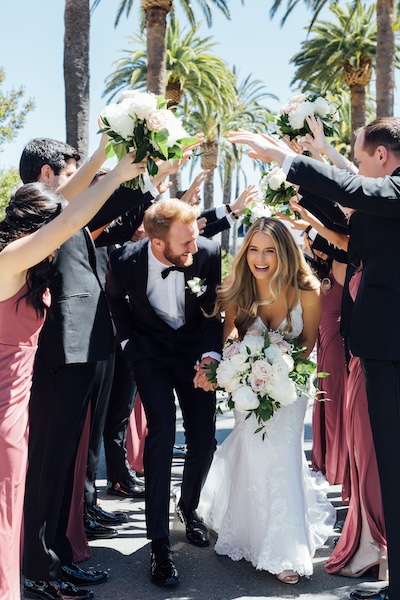Business + Marketing
Google strives to answer a searcher’s question on their first page of search results. If your marketing plan includes search engine optimization (SEO), then ranking first means that your site must provide better answers than other websites.
Those answers might appear as textual content on your home page, on a blog post, in an image caption or on a static web page. Google doesn’t care where that answer lives. But before providing answers, Google wants to understand the question. And to understand the question, search engines look to searcher intent.
Searcher intent refers to the true meaning or desire behind searched words. Google uses artificial intelligence, keywords, search history and geographic location to interpret that true meaning.
For example, someone might search for “best winter coat” because they:
• need a heavy coat
• need a lightweight coat
• want choices
• want to compare winter coats
• want winter coat pricing
And the deeper reason why they’re searching is:
• their old coat is worn out
• they want the latest fashion
• they’re going to a formal event
• they’re traveling and need a coat
• they’ve gained weight and their coats are too small
• they’ve lost weight and their coats are too big
• they’re cold
Similarly, if someone searched for “best wedding photographer,” they could want:
• award-winning photographers
• destination photographers
• great photographer portfolios
• local photographers
• photographer comparisons
• photographer lists
• photographer pricing
• popular photographers
• wedding photo ideas
• wedding photography specialists
And the reason why they’re searching is that they’re:
• newly engaged
• hoping to be engaged soon
• a parent
• a wedding planner
• a venue manager
• a competitor
Google’s mission is to provide searchers with “the most relevant, highest quality information as quickly as possible.” So, when you’re targeting keyword phrases and you want to rank first, you must create content that deserves a first-page position.
Ranking first means that Google thinks you have the best answer to a searcher’s question. Or even better, that you have the best answer to a question posed by a searcher they’ve closely identified.
When I’m defining searcher intent, I start by defining my audience. For example, if I’m writing for newly engaged couples, I might target my content by gender (male, female, identifying other), their planning stage (before or after venue selection) or sensibilities (serious, carefree, quirky).
Alternatively, I could broadly define my audience as anyone interested in my photography. However, when I can closely define my audience, I’m more likely to create content that speaks more powerfully.
I considered intent when I created this article and I focused on the wedding photographer demographic, knowing that photographers with other specialties would get the idea. But that was a carefully considered choice. Take the time to define your audience similarly.
After you’ve defined your audience, then it’s time to list the questions that need answering based on the reasons behind a searcher’s search—and then answer them completely. Proven methods include brainstorming, collaboration and research.
When brainstorming, no idea is too vague, small, silly, common or obscure. Volume is your goal. When you can’t think of new ideas, revise and prioritize your list. For extra credit, put your list aside and return to it a few days later. Fresh eyes will yield new results.
Your next step is to collaborate. Send personal messages to friends, family and colleagues, or ask for feedback on social media. When you collaborate, keep your feedback loop open and honest. You might ask, “If you were newly engaged and you wanted to hire the best wedding photographer, what would you want to know?” You could also take a different approach and ask, “What makes someone the ‘best’ wedding photographer?”
Assemble those answers and create corresponding questions. Then merge those questions with the questions you developed while brainstorming. Once the questions are assembled, use your personal knowledge and new research to answer those questions.
Research is important because you need unique, comprehensive, valuable and trustworthy information to answer visitor questions. And by answering questions completely, search engines may reward you with first-page positions.
Plug your question into Google to start your research. Look at the top ten search results for that question. Take note of how other websites answer the question. Use that information to create better answers to the same question—using your own words. Don’t plagiarize. Google knows who posted that content first, so you risk being ignored by copying. You also risk the wrath of site owners and the Internet.
After you’ve answered the question, expand your answer beyond what has been answered previously. So, If you’re writing about wedding photo ideas and three of the top ten sites talk about negative space without defining negative space, then that’s your opportunity to offer unique content through your precise explanation of negative space.
Once you’ve looked at the top websites for ideas, find the “People also ask” section at the bottom of Google’s search results. There you’ll find a list of popular related questions. Answer those suggested questions, too.
Finally, trim unnecessary words. Contrary to Internet myths, website content isn’t about word count. It’s about being the best answer to a searcher’s question. If you can offer the best answer in 100 words (or 50 words), then Google will still reward you.
Now that I’ve shared the process, you can probably recognize that creating visitor content is like writing a research paper. But don’t despair. You only have to be better than your competitors. So, do better. Be better. And may the force be with you.
Rob Greer is a Los Angeles wedding photographer and Star Wars fanatic who teaches SEO workshops and presents at conferences like WPPI and Imaging USA. To learn more, visit robgreer.com.
Related: Kicking Up Your Social Ad Campaigns with Instagram’s Powerful Targeting Tools
A Simple Guide to Steering Your Creative Business in the Right Direction
10 Tips to Make Your Photo Business Rank Higher With Solid SEO Tactics
Six-Figure Wedding Photography: 4 Easy SEO Tips to Grow Your Wedding Photography Business





